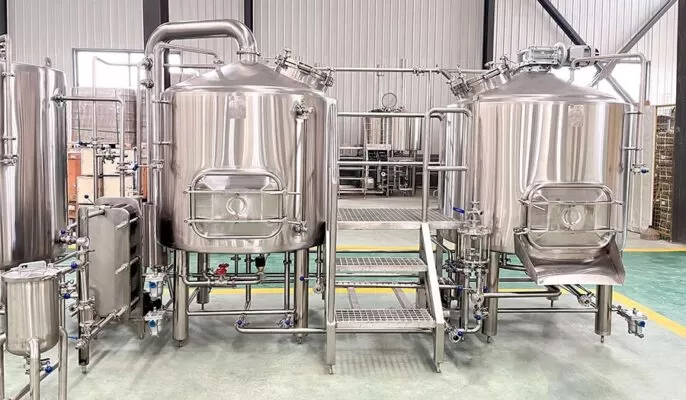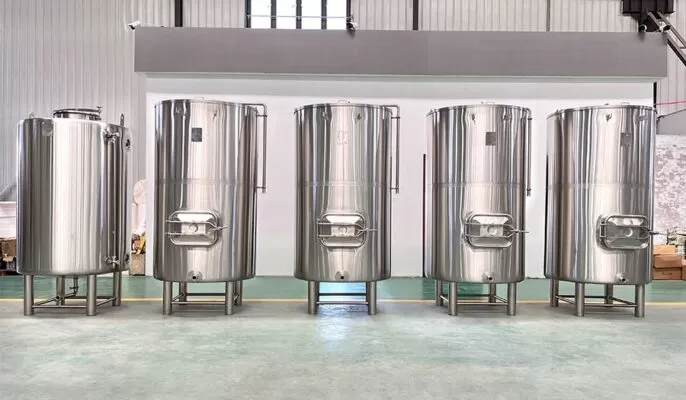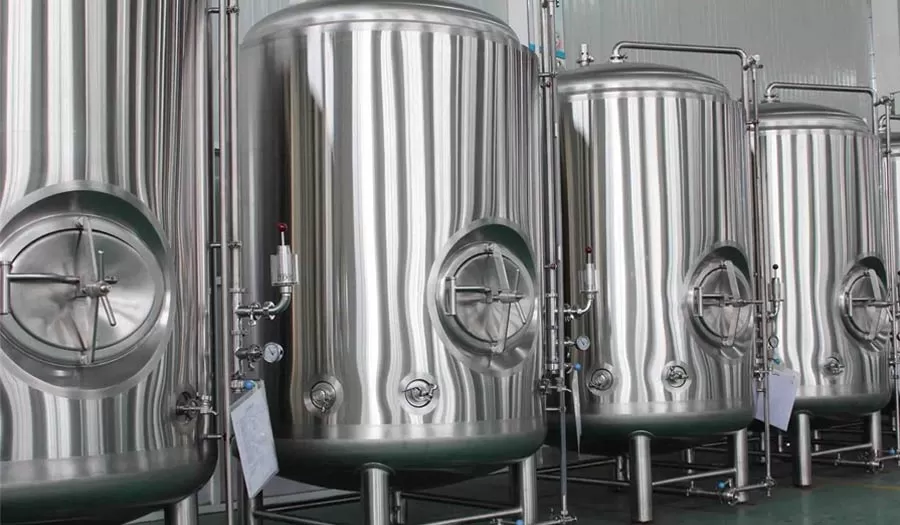Brewing tanks are an essential piece of equipment for the brewing process, and brewing tanks come in many shapes and sizes. These vessels come in a variety of shapes, sizes, and functions, and each plays a vital role in the beer brewing process. The beer production process can be divided into two stages. The first stage is brewing, which takes place in the brewery, where a mixture of malt, water and hops is used to get wort. The second stage, fermentation and maturation, takes place in designed tanks (fermenters and maturation tanks). These brewing tubes are used to transform wort into new beer, which then undergoes a maturation process to get the final beer.
Stainless steel beer tank
Beer is a natural product made from water, grains, hops and yeast. The principles of brewing beer are simple, but must practical skills no matter the scale of brewing. Micet offers custom designed CCT fermenters, BBT storage tanks and all other beer tanks required by breweries in capacities from 100 L to 5,000 HL.
Mash Tuns
For mixing ground malt with temperature controlled water. This is called a “mash” and a similar result is called a “mash”. The mash is held at a predetermined temperature and time (for example, at 65°C for 1 hour) until the malt starch is converted to sugar, and the dissolved maltose (wort) is flushed into the pot where the hops are added. The mash tun is a single vessel in which mashing and wort runoff occur. It is used for brewing ales and other top-fermented beers. It lays the foundation for the flavor and body of beer.
A traditional mash tun is a closed circular vessel of varying diameters, made of stainless steel or copper. In a traditional brewery, the process of mashing, wort draining and emptying the mash tun takes approximately 6 hours.

Tips for using a mash tun
- Temperature is critical. Of temperature, follow instructions .
- We like to use 1/2″ stainless steel barbs attached to 2-3′ of silicone tubing to and transfer hot liquids from one place to another. Should cost less than $10 to buy.
- When draining liquid from the mash barrel, there is always liquid below the faucet level. Be sure to tilt the mash tun toward the spigot to drain the last half-gallon or so of liquid.
- We’ve found that using a mash tun this way results in 75-80% efficiency, so be sure to factor these numbers into your recipe planning. (Due to the reduced efficiency of BIAB, we offer formulations around 73%.)
Filter bucket
After you actually mash the grain, you want to extract the wort from it as as possible, making sure you take away all the fermentable sugars. Most decent mash tun designs will have a built-in “false bottom,” which is a perforated metal dome. It is designed to allow the wort to flow through it and out through the spigot, while the grains remain above the lauter plate.
This is desirable because you don’t want any grain material to go into the boil, as grains heated to around 170°F (77°C) will release tannins into the wort and affect the flavor.
Brewing kettle
Entering the brew kettle, the wort begins to boil vigorously. This stage serves several purposes: sterilizing the liquid, extracting bitter compounds from the hops, and concentrating flavor. This is a stage where creativity meets precision, as brewers add hops and additives to brew different styles of beer.
Most breweries use steam kettles, which use a steam jacket inside the kettle to boil the wort. Steam is delivered under pressure by an external boiler. Some breweries use other boiling methods to achieve a more intense boil and achieve the goal of a more complete boil.
Fermenter
Fermenters are used throughout the fermentation process and have the advantage of carbonating the beer after 80% of fermentation has occurred.
used types of fermenters include:
- Open top fermentation tank
- Closed fermentation tank
- Combined tank fermentation tank
- Plastic fermentation tank
- Barrel fermentation tank
- Horizontal fermentation tank
The type of fermentation vessel you choose depends on the type of beer you want to brew. Many small breweries prefer closed pressure vessels, which allow for natural carbonation and faster turnaround times. But, if you plan to bottle your beer, you don’t need a pressure vessel.
Fermentation vessels can be customized in many different ways. Some common modifications include dry hopping ports, carbs, rockers, and rotary valves. They should usually be equipped with temperature probes, CIP spray balls and sampling valves as standard.

Bright tank
A bright tank is an important part of the brewing process, used to create the right amount of carbonation and keep it carbonated for a long time. Beer cans will be one of the last places your beer spends before bottling or drinking.
You can choose from different types of bright tanks. At Micet we offer both jacketed and single wall bright tanks for different purposes. Jacketed bright tanks give you unparalleled accuracy when it comes to keeping your product at the right temperature for bottling or serving.
Regulating tank
These are not necessary for all breweries, but can be a useful addition. Clear beer tanks (or BBTs) are most used to clarify and age beers such as lager, but can also be used to add carbonation. Vertical or horizontal, there are many options.
Ethylene glycol/ice water tank
Many breweries use coolants to maintain fermentation temperatures and chill beer. Ethylene glycol is the most common and is stored in a large tank and then pumped into a jacket within the fermentation vessel.
If using a glycol tank, you will need a separate system pump, automatic (solenoid) valve on the fermentation vessel, control panel, and industrial chiller. The glycol should also have a loop through the PHE to aid in wort cooling.
Application
MICET complete turnkey microbrewery brewing systems come with detailed tank drawings, piping flow diagrams and brewery layout. We talk about malt grinding, heating, refrigeration, pumps, valves, piping and controls as well as brewing vessel and tank specifications. An experienced engineering and installation team will assist you every step of the way. From designing the brewing equipment layout, individual tank drawings and fabrication, to installation, commissioning and training.




